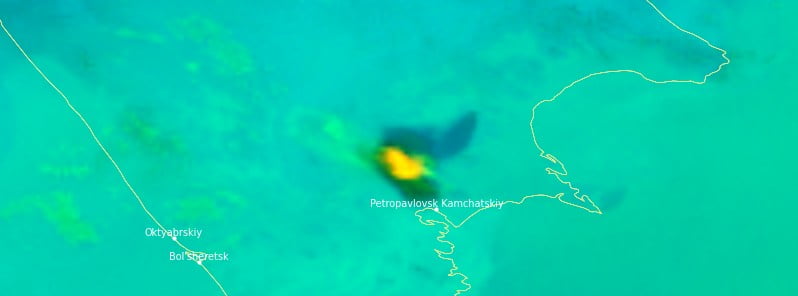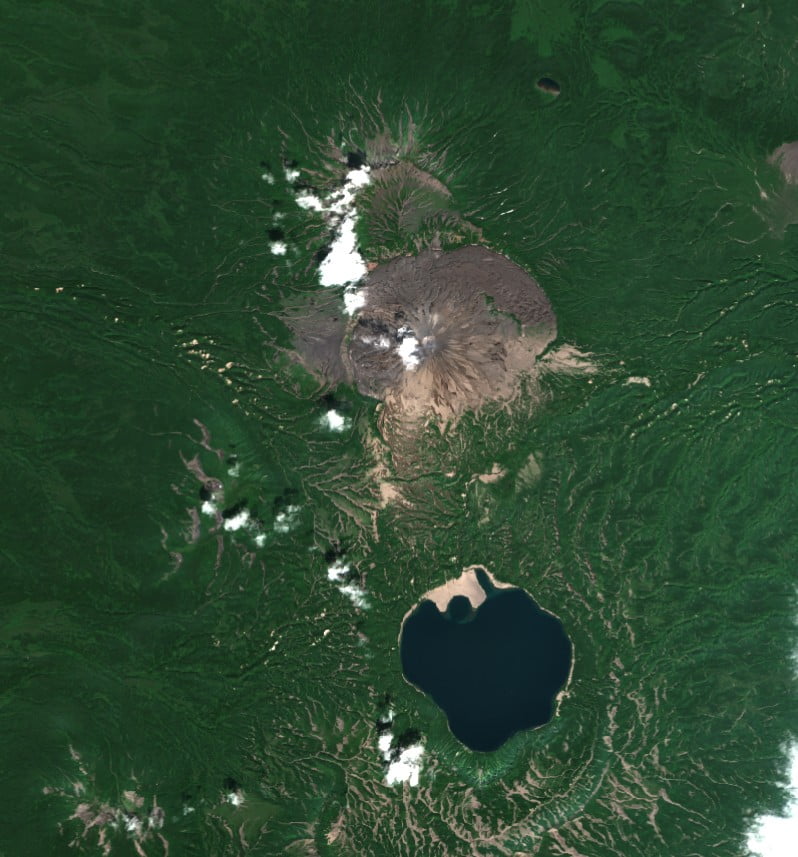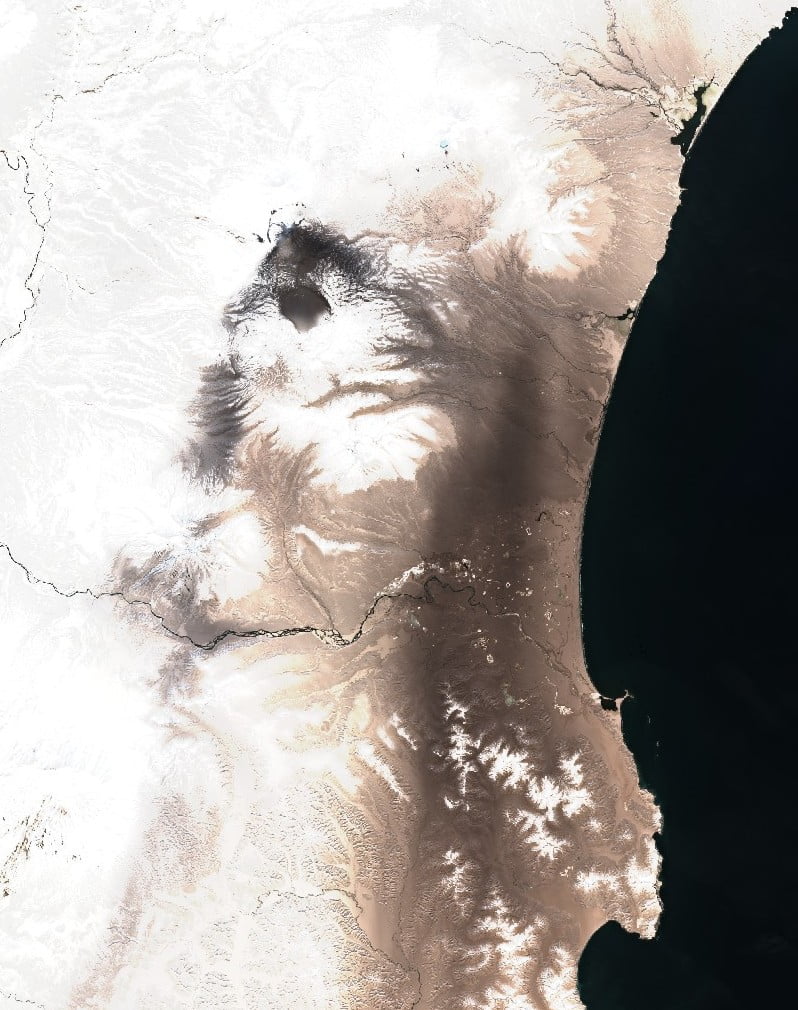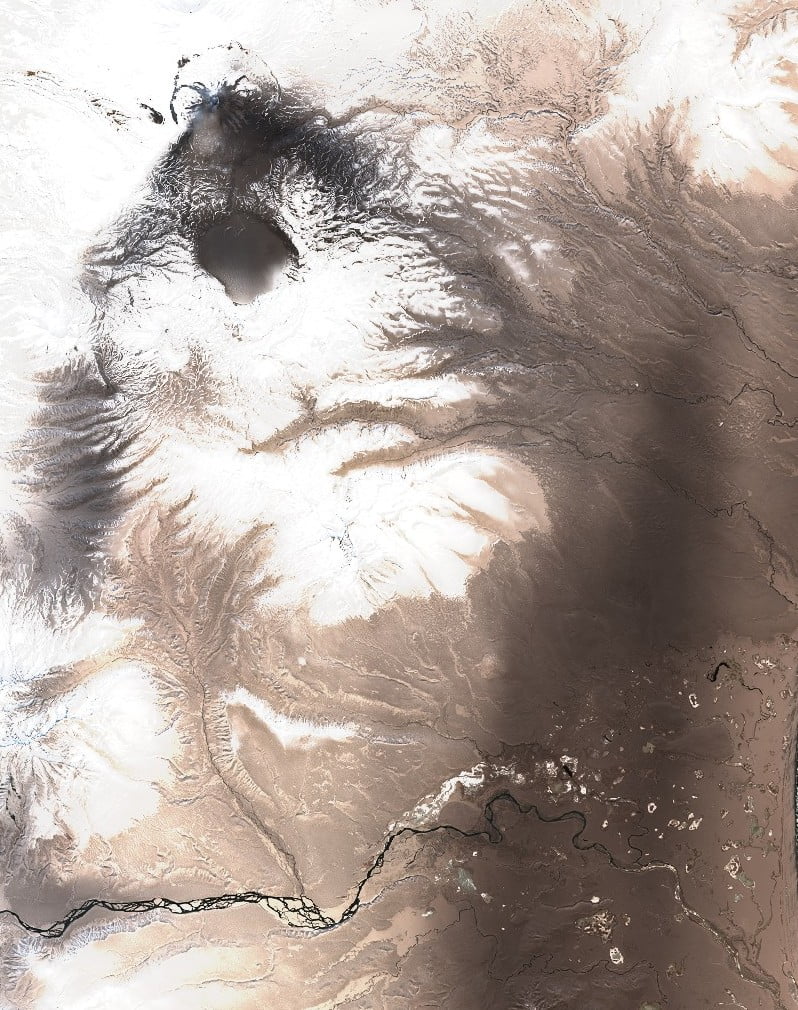Eruption at Karymsky volcano, ash to 12 km (40 000 feet) a.s.l., Russia

A strong eruption was detected at Russia’s Karymsky volcano at around 10:50 UTC on July 13, 2022. The Aviation Color Code remains at Orange.
According to the Tokyo VAAC, the volcanic ash cloud was rising up to 12 km (40 000 feet) above sea level at 11:50 UTC, drifting SW.1 Volcanic ash emissions continued through at least 14:20 UTC.
The latest Volcano Observatory Notification for Aviation (VONA) for Karymsky, issued by KVERT at 14:10 UTC, states that moderate explosive activity at the volcano continues, with an ash plume rising up to 8.5 km (28 000 feet) a.sl., extending to the SW.
The distance of the ash plume/cloud at 13:20 UTC was 73 km (45 miles) SW of the volcano.
Ash explosions up to 12 km (40 000 feet) a.s.l. could occur at any time. Ongoing activity could affect international and low-flying aircraft.
Sentinel-2 satellite overflew the volcano on July 13, 2022. Unfortunately, it was before the eruption started.


A series of violent explosions at the volcano on April 19 ejected ash up to 10 km (33 000 feet) a.s.l. and blanketed the surrounding land in a layer of brown ash. The Aviation Color Code was raised to Red at 22:04 and lowered back to Orange at 03:44 UTC on April 20.




Geological summary
Karymsky, the most active volcano of Kamchatka’s eastern volcanic zone, is a symmetrical stratovolcano constructed within a 5 km (3.1 miles) wide caldera that formed during the early Holocene.
The caldera cuts the south side of the Pleistocene Dvor volcano and is located outside the north margin of the large mid-Pleistocene Polovinka caldera, which contains the smaller Akademia Nauk and Odnoboky calderas.
Most seismicity preceding Karymsky eruptions originated beneath Akademia Nauk caldera, located immediately south.
The caldera enclosing Karymsky formed about 7 600 – 7 700 radiocarbon years ago; construction of the stratovolcano began about 2 000 years later. The latest eruptive period began about 500 years ago, following a 2 300-year quiescence.
Much of the cone is mantled by lava flows less than 200 years old. Historical eruptions have been vulcanian or vulcanian-strombolian with moderate explosive activity and occasional lava flows from the summit crater.3
References:
1 VA ADVISORY – KARYMSKY – 20220713/1227Z – TOKYO VAAC
2 VONA/KVERT Information Release, July 13, 2022. KVERT, Institute of Volcanology and Seismology FEB RAS.
3 Karymsky – Geological summary – GVP
Featured image credit: Himawari-8, RAMMB/CIRA, The Watchers. Acquired at 14:30 UTC on July 13, 2022

Commenting rules and guidelines
We value the thoughts and opinions of our readers and welcome healthy discussions on our website. In order to maintain a respectful and positive community, we ask that all commenters follow these rules.